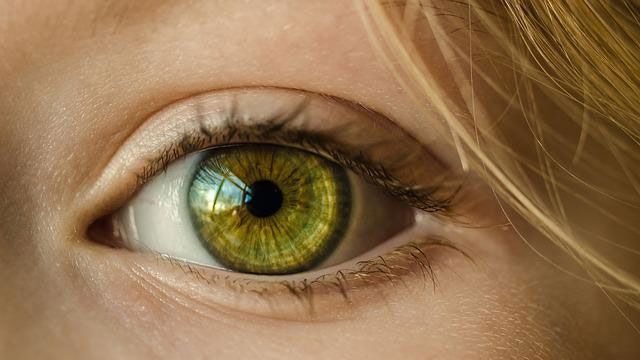Retinal imaging has been identified as a non-invasive, inexpensive, and accurate way to track human aging. Research by the Buck Institute, Google Health, and Zuckerberg San Francisco General Hospital has led to the establishment of an aging clock called eyeAge, which is based on a genome-wide association study (GWAS) and is independent of phenotypic age. Kenneth Wilson, a postdoc at the Buck Institute, validated some of the genes highlighted in the analysis, and identified nearly 30 genes associated with age-related diseases such as visual decline, diabetes, hearing loss, Alzheimer’s disease, cardiovascular disease, and stroke. Retinal imaging is less expensive, non-invasive, and more accurate in measuring aging compared to other aging clocks. Retinal imaging can also be used to detect at least 39 eye diseases, such as glaucoma and diabetic retinopathy, and non-eye diseases, such as chronic kidney disease and cardiovascular disease. It provides an actionable evaluation of gero-protective therapeutics, and the genes identified from patient samples provide targets for potential treatments for age-related diseases.
Retinal Imaging as a Non-Invasive Method to Track Human Aging
Retinal imaging has been suggested as a new way to track aging that is less expensive, non-invasive, and accurate compared to other aging clocks, according to a study conducted by researchers from Buck Institute, Google Health, and Zuckerberg San Francisco General Hospital. The study conducted a genome-wide association study (GWAS) to establish the genetic basis for such a clock, called eyeAge. The research was published in eLife.
The retina’s fundus, a blood vessel-rich tissue, is used to image aging, and researchers noted that this type of imaging could be valuable in monitoring the efficacy of interventions aimed at slowing the aging process. Senior co-author of the study, Pankaj Kapahi, also pointed out that retinal scans are more reliable than biomarkers from the blood, as changes in the eye are less susceptible to day-to-day fluctuations compared to biomarkers. Retinal imaging provides an actionable evaluation of gero-protective therapeutics.
According to Kapahi, discernable changes in the eyes of patients being treated could determine the trajectory of aging with 71% accuracy in less than a year. Changes in the eye are also less influenced by day-to-day fluctuations and more reliable in detecting early symptoms of many age-related diseases, including age-related macular degeneration (AMD), diabetic retinopathy, Parkinson’s, and Alzheimer’s disease. The retina’s microvasculature has also been found to be a reliable indicator of the body’s overall circulatory system and brain health.
Ophthalmologists can detect subtle changes in the vascular system, which first appear in the smallest blood vessels, and capillaries in the retina are among the smallest in the body. The eye could be a window to aging, as retinal scans are less expensive, non-invasive, and more accurate in measuring aging compared to other aging clocks. Retinal imaging is likely to become more common as research continues to show its benefits in monitoring and slowing the aging process.
Google Research Develops Deep Learning to Detect Eye Diseases
Google Research has developed models to detect at least 39 eye diseases, including glaucoma, diabetic retinopathy, and age-related macular degeneration (AMD), and non-eye diseases such as chronic kidney disease and cardiovascular disease using retinal images. The research emphasizes the value of longitudinal data for analyzing accurate aging trajectories. EyePACS longitudinal dataset involves multiple scans from individual people over time, resulting in a more accurate positive prediction ratio for two consecutive visits of individuals rather than random, time-matched individuals.
The researchers trained and tuned the model for eyeAge using their well-studied EyePACS dataset that involves more than 100,000 patients and applied it to patients from the UK Biobank, which included more than 64,000 patients. EyeAge is an aging clock based on retinal imaging that is less expensive, non-invasive, and more accurate in measuring aging compared to other aging clocks. EyeAge is also independent of phenotypic age, a well-established aging clock based on blood markers, providing more information to track aging.
The GWAS was done at the Buck Institute utilizing biological samples available from the UK Biobank. Kenneth Wilson, a postdoc at the Buck Institute, validated some of the genes that were highlighted in the analysis. Wilson identified nearly 30 genes from patient samples associated with visual decline, diabetes, hearing loss, Alzheimer’s disease, cardiovascular disease, and stroke. One of the genes, ALKAL2, has been previously shown to extend lifespan in Drosophila via the fly homolog ALK. When Wilson knocked down the gene in the flies, it improved their vision later in life and extended their lifespan.
Retinal imaging is becoming more common as research continues to show its benefits in detecting early symptoms of age-related diseases and non-eye diseases. Deep learning can predict diabetic retinopathy from retinal images, which can identify diseases early on and potentially prevent vision loss.
Retinal imaging has provided human data that could potentially be used to treat age-related diseases. The study conducted by Buck Institute, Google Health, and Zuckerberg San Francisco General Hospital showed how imaging of the fundus, a blood vessel-rich tissue in the retina, can track human aging. Researchers did a genome-wide association study (GWAS) to establish the genetic basis for an aging clock called eyeAge, which is independent from phenotypic age, a well-established aging clock based on blood markers. Kenneth Wilson, a postdoc at the Buck Institute, validated some of the genes highlighted in the analysis, building on previous Buck research that uncovered a connection between diet, eye health, and lifespan in Drosophila. Retinal imaging is less expensive, non-invasive, and more accurate in measuring aging compared to other aging clocks.
Don’t miss interesting posts on Famousbio








